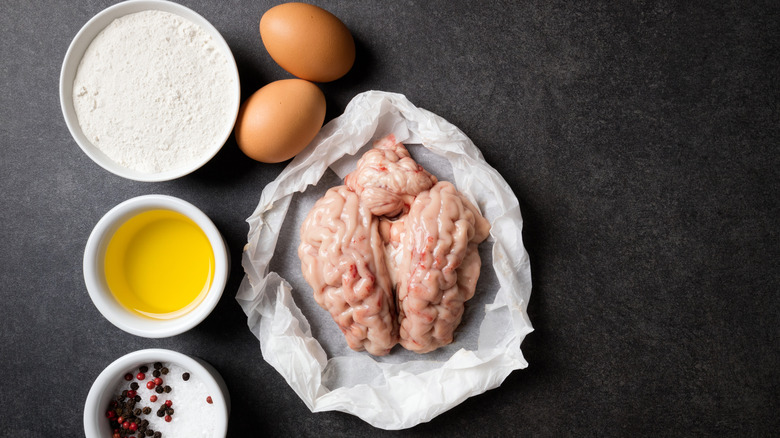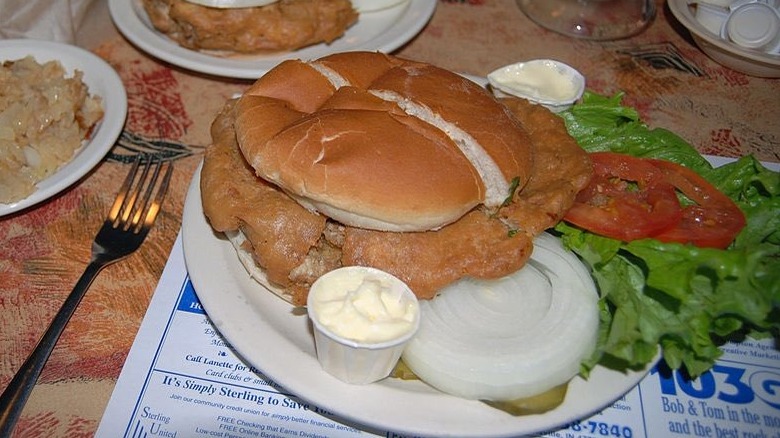How Brain Sandwiches Rocked The 20th Century Working Class
If your gag reflex has made it past the title, welcome! Your curiosity is about to serve you an interesting history lesson. When it comes to consuming animal brains, there is nothing remotely unusual about it. Historically, we've been eating brains since ancient times, with recipes appearing in the world's oldest cookbook, "Apicius de re Coquinaria" (per Gutenberg.org). In this context, the argument can be made that modern American cuisine is relatively sheltered. We like our burgers, french fries, hot dogs, and apple pie, which is all well and good (via Restaurant Clicks). What you're less likely to see grow in popularity are those bits of the animal — like brains — that, until very recently, would have been considered wasteful to discard.
Despite growing fears of inflation and economic stagnation, we do live in a comparatively prosperous time. This has allowed us to move away from some of the food traditions of yesteryear in favor of modern trends. Eating brains — specifically calves brains — is all but lost in the American food scene. But the fried brain sandwich was once the go-to meal of the 20th century working class of the Midwest, and it's really easy to see why.
Literal brain food
From the start of the 20th century through the mid-70s, fried brain sandwiches were immensely popular with the working class of America's Midwest (via Chicago Tribune). Beef stockyards were still up and running, and the off-cuts, such as brain, were readily available for workers and their families to consume. East St. Louis became the epicenter of the Midwest's brain craze, owing to its thriving economy as a packing town. The preferred method of eating brain was the fried brain sandwich, which consisted of a fried brain patty on a bun served with mustard, onions, and pickles.
Brain, as it turns out, is actually somewhat of a superfood. The Takeout explains that brain sandwiches were the perfect accompaniment to the long working days of laborers. Brains are calorically dense and high in fats, including omega-3 fatty acid DHA. The brain sandwich's popularity declined with a series of Mad Cow Disease cases in the 1990s and early 2000s. Thankfully, Mad Cow Disease is no longer a real danger to American beef. This begs the question, why not — if our sensibilities will let us — bring back affordable off-cuts like brain into the public food sphere? That is something to think about.

